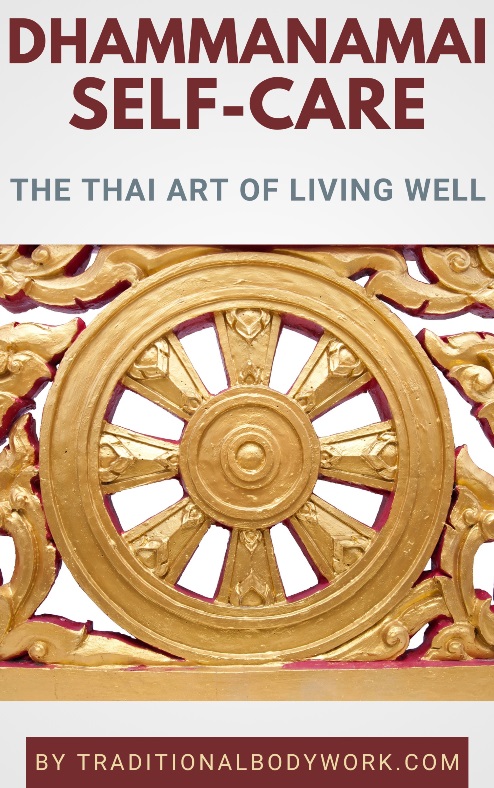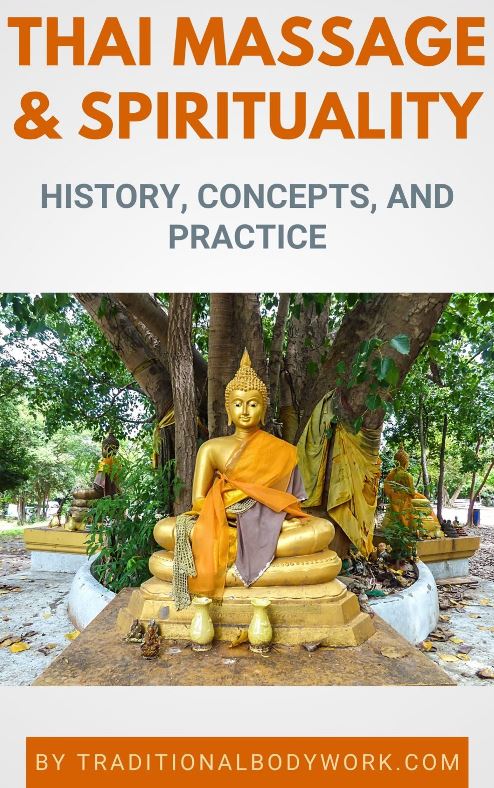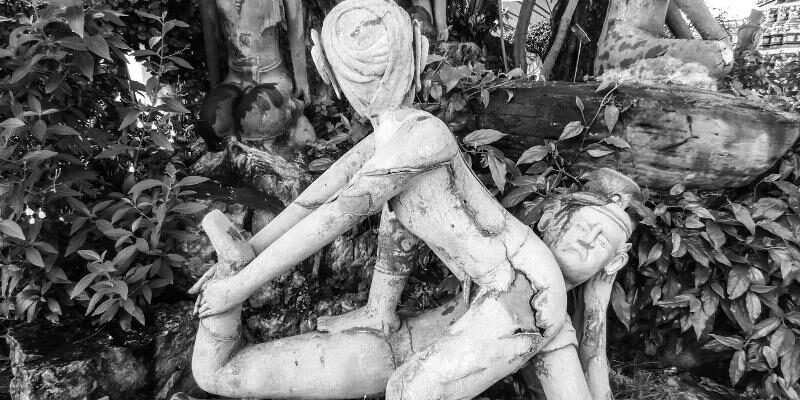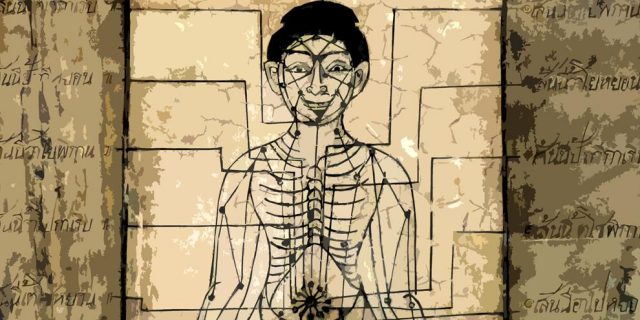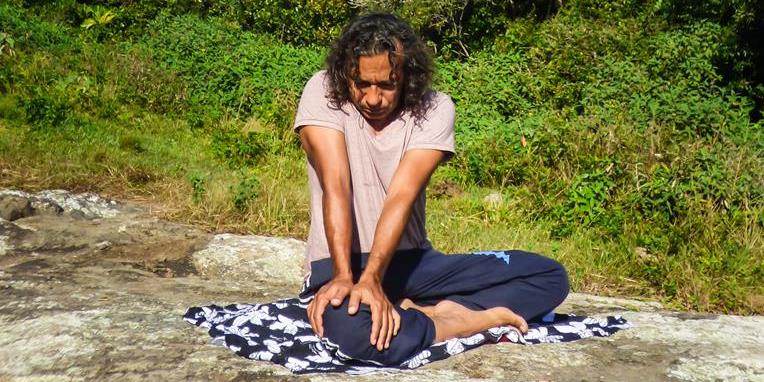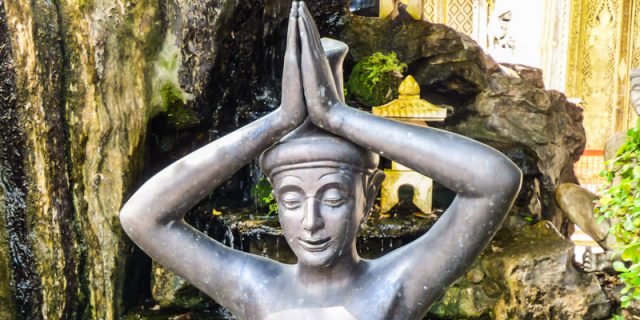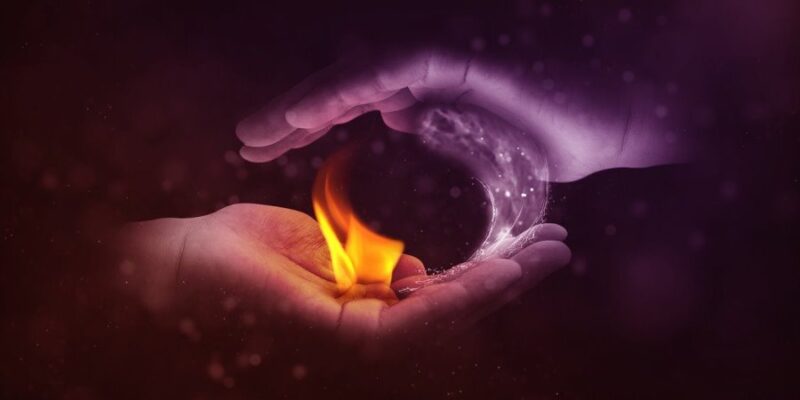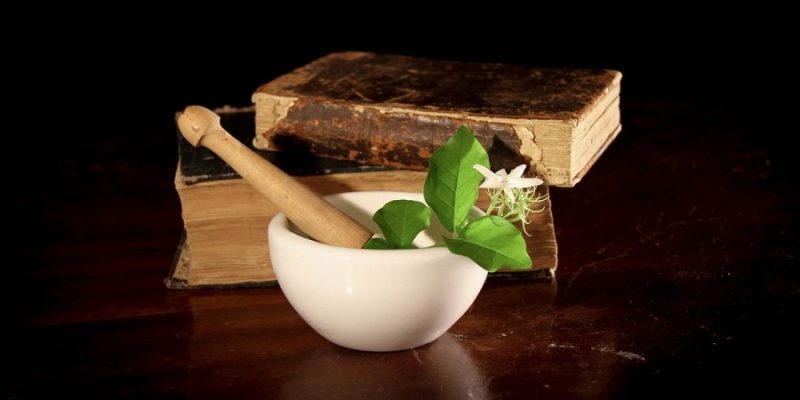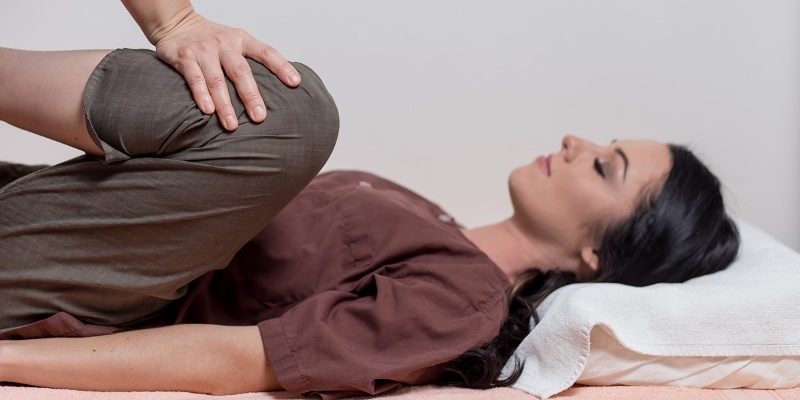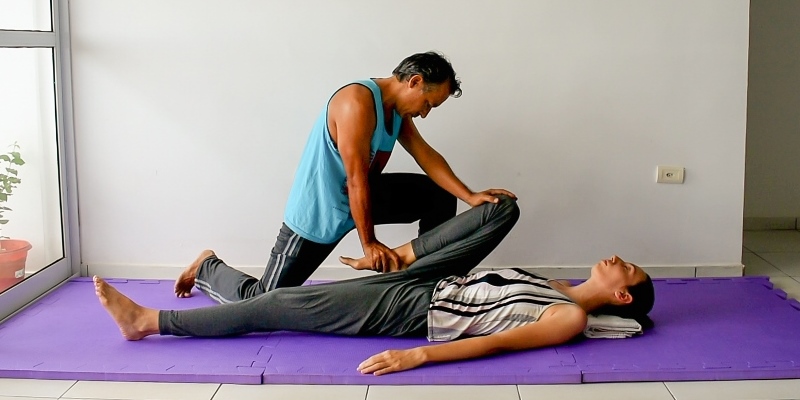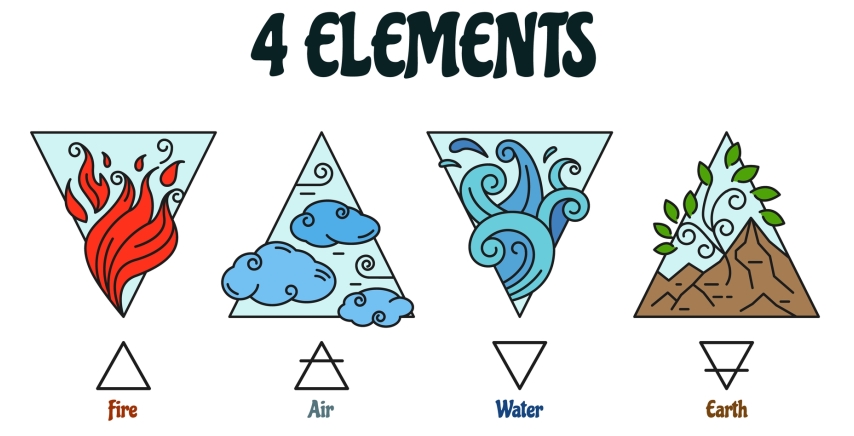
According to Traditional Thai Medicine (TTM), the human body is composed of fundamental Four Elements, which are defined as Earth (Din), Water (Naam or Nam), Fire (Fai), and Wind or Air (Lom). In the Thai language these are called the Tard (also written as That or Thaat).
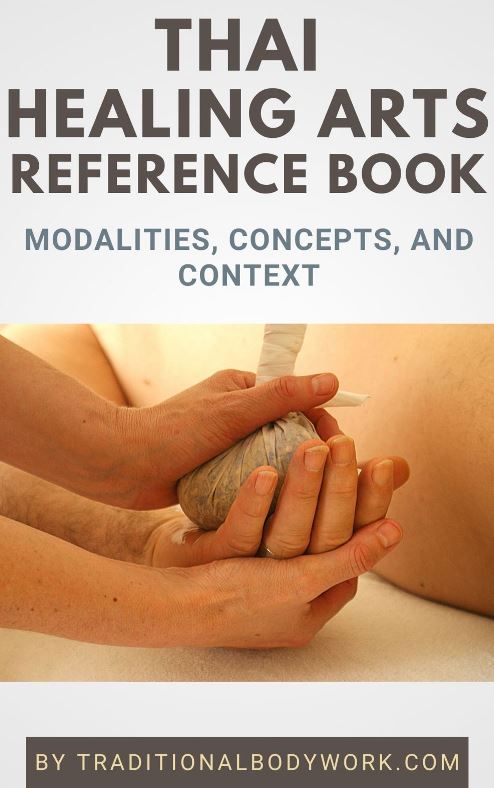
To understand the Thai Healing Arts better, it’s helpful to have a grasp of the idea of the Four Elements as a core principle of TTM.
But first things first: the Thai people certainly do not believe that there is literally a piece of earth, a drop of water, a breeze of wind or a flame of fire in each atom of the universe. It’s rather that each of the Four Element refers to the qualities of that substance, where substances are, for instance, organs, cell tissue, psychological and physiological processes and functions, and so on.
Substances that are solid can be said to have the qualities of the Earth Element. Substances that are liquid are of the Water Element. Movement is the quality of the Air Element, and heat is the quality of the Fire Element.
Some basic guidelines concerning the Four Elements and the human body can be outlined as follows here further below.
Table of contents:
⦿ Water (Naam or Nam)
⦿ Wind or Air (Lom)
⦿ Fire (Fai)
⦿ Categories and Interaction
⦿ Causes of Illness
Earth (Din)
Earth represents the structural organs and is about the physical makeup and building blocks of the body.
Imbalance of the Earth Element would manifest as diseases or discomforts of the organs associated with the Earth Element. Some afflictions could be skin diseases, bone diseases, tumors, and other so-called “solid disorders.”
Water (Naam or Nam)
Water represents all liquids, phlegm, and semi-solids flowing and being absorbed by the body. The water Element is found in the Earth Element and requires the Wind Element for movement.
Imbalances of the Water Element could manifest as problems with body organs, substances, or processes that are associated with the Water Element, which could result in blood diseases, eye disorders, renal and venereal diseases, bladder or urinary tract infections or stones, diabetes, and diseases manifesting in abnormal urine or other liquid discharge.
Wind or Air (Lom)
Wind represents the energy that controls movement in the activities and functions of the body: upward wind, downward wind, abdominal wind, wind in the bowels, wind in blood circulation, wind penetrating all over the body and respiration (breath). Wind represents and constitutes lightness and circulation throughout the body
Mind that the above is related to so-called Gross Wind. Wind could also relate to Subtle Wind, which then rather includes our psychophysical and psychophysiological energy, emotions, mind, consciousness, and Life Force Energy (Lom Pran).
Imbalance of the Wind Element could manifest as symptoms such as pneumonia, cough, mucous congestion, tuberculosis, bronchitis, other respiratory illnesses, fainting, dizziness, and arthritis, but also as digestive issues. The Wind Element is considered to be the most important element in promoting mobility, strength, longevity, and vitality.
Fire (Fai)
Fire represents vital heat energy that warms and heat-up the body. It consists of heat and Life Force Energy. Fire has the nature to burn, to destroy, to transform and to spread Life Force Energy.
Fire relates to the other Four Elements as it supports the Wind Element and Water Element to flow with the proper temperature. Fire keeps the Earth Element warm to maintain the body organs in a healthy condition.
Imbalance of the Fire Element primarily manifests as diseases of the heart and circulatory system, and also includes health issues with our digestion, blood circulation and lymphatic system.
Categories and Interaction
According to the concepts mentioned above, the organs and functions of the human body can be broken down into the following categories:

For each person, there will be one Element that is more dominant than others. One’s own Dominant Body Element — called Tard Chao Ruan in Thailand — is basically determined by the date of one’s birth. This Dominant Element of a person plays an important role with regard to one’s characteristics and appearance as well as the weak and strong points in one’s health.
The constant interaction of the Four Elements creates and sustains the processes of the human body. Therefore, it’s thought to be of vital importance to keep the Four Elements balanced throughout life.
When the Four Elements of the body are in equilibrium, the body and mind will be healthy. By contrast, if an imbalance in these Elements occurs, that is, if there is a deficit, an excess, or disability (dysfunction) in any of the Four Elements, a person will become ill.
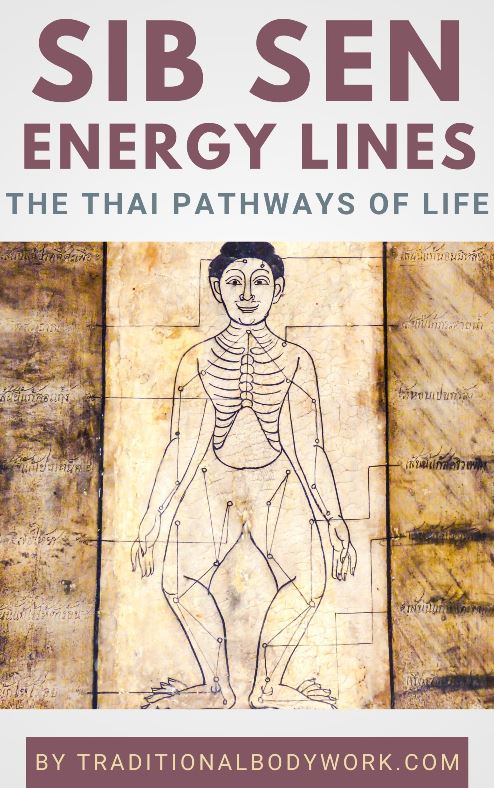
During our life, the elements go in and out of balance in a continuously changing state of health or disease. Children and the elderly are more susceptible to disease than average adults because of the delicate state of their elements.
In children, the Four Elements are not yet fully mature, and in the elderly, they are weakened by many years of life. Gradually, the elements become more and more weak, and ultimately, when they are exhausted, the individual dies.
During our life, the Four Elements go in and out of balance in a continuously changing state of health or disease. Children and the elderly are more susceptible to disease than average adults because of the delicate state of their Four Elements.
In children, the Four Elements are not yet fully mature, and in the elderly, they are weakened by many years of life. Gradually, the Four Elements become more and more weak, and ultimately, when they are exhausted, the individual dies.
The primary aim of TTM is to promote health and longevity by maintaining the vitality and balance of the Four Elements, that is, TTM strongly focuses on prevention of illness. The application of Thai Massage, a proper diet, herbal medicine, and adherence to Thai Dhammanamai practices are some of the means or tools to reach this goal.
The secondary aim of TTM is “curing or treating the disease” (with for instance Thai Massage or herbal medicine), but it’s obvious that prevention (the primary goal) will often remove the necessity of curing (the secondary goal).
Causes of Illness
In the TTM, the root cause of all illness is an imbalance of the Four Elements, which causes an imbalance of the Circle of Life, that is, a disequilibrium between the Body, Citta (Mind), and Energy essences. When the three essences are balanced, the human organism subsequently enjoys health and wellbeing.
Being more specific, one could say that illness is caused by an obstruction of the availability and/or free flow (or free exchange) of Life Force Energy (Lom Pran), which will be usually due to a problem (or malfunction) in the Physical Body or in the Citta (heart/mind) which is caused by an imbalance in the Four Elements.
According to TTM, this obstruction of free flowing Life Force Energy can be caused by the four following factors which influence the Four Elements:
- Supernatural powers;
- Power of Nature;
- Power of the Universe;
- Power of microorganisms.
Detailing the above mentioned factors we can recognize the following aspects:
The Four Elements Themselves
The imbalance in the Four Internal Body Elements can be caused by a direct imbalance in the Four External Elements (environmental influence).
The Seasons
Heat, cold, humidity, dryness, and wind during different seasons can affect human health.
Age
During different periods of our lives, people are more prone to get ill from the influence of the External Elements and weakening of the Internal Four Body Elements.
Geography
As the geographic location of where one lives dictates the weather and the environment, it can play a role in affecting one’s health.
Time
Astrologically, the sun, moon and stars continuously move, thereby influencing human life and health differently, even during different times of the day.
Inappropriate Behaviors that Can Become Causes of Ailments
• Inappropriate eating habits, that is — eating too much or too little, eating food that has gone bad, or unfamiliar food, or food that is not suitable for one’s own Dominant Body Element, or diseases.
• Imbalanced postures while sitting, standing, walking, or sleeping can lead to disequilibrium of the body structure and needless worsening of health.
• Exposure to extreme weather or polluted air.
• Being deprived of food, water or sleep.
• Delayed urination or defecation.
• Overwork, over-exercise, or excessive sexual activity.
• Deep sorrow or extreme exhilaration.
• Extreme anger or lack of equanimity.
Supernatural Powers
Ancestors souls, powerful spirits of the forest, evil spirits, punishment from a heavenly spirit of those who misbehave, and Karmic influences.
Kimijati
The Thai equivalent of microorganisms (bacteria, viruses) or parasites.



